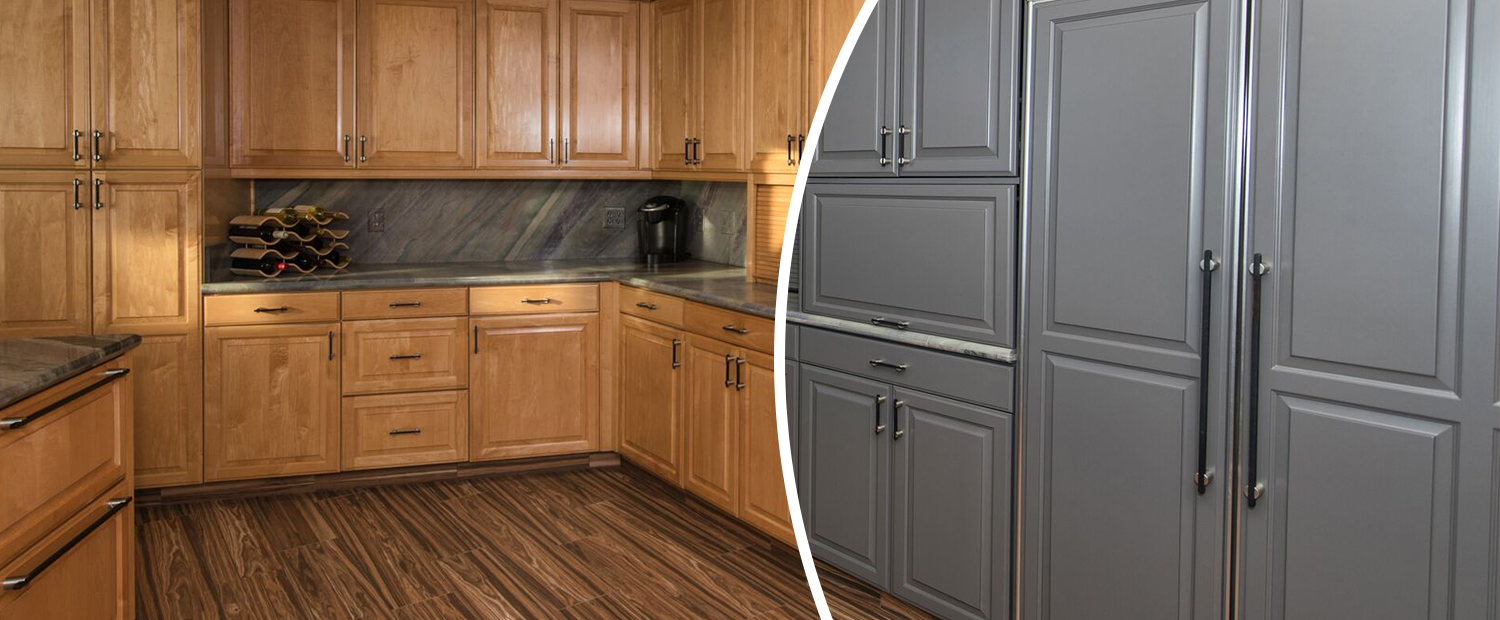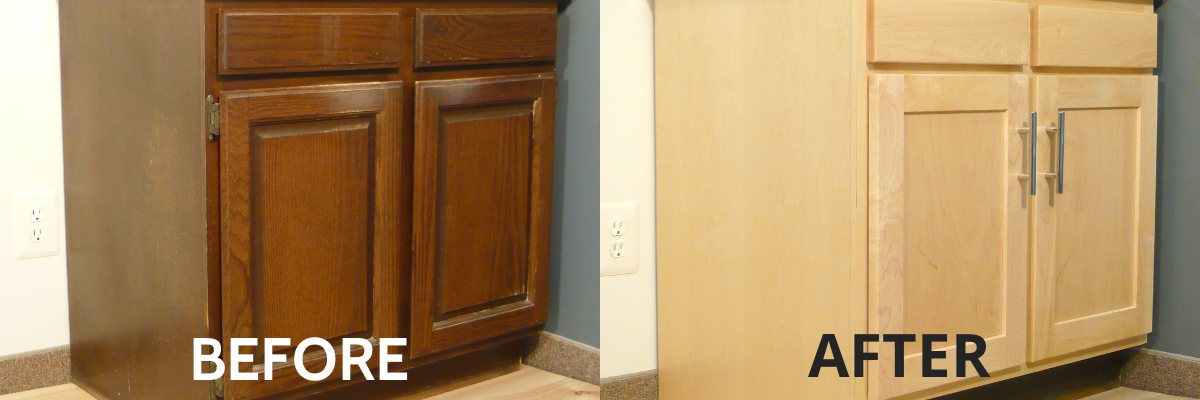Understanding the Problem: Distressing Kitchen Cabinets With Stain

Distressing kitchen cabinets, while a popular design choice, can sometimes lead to unwanted problems. Understanding the common causes, types of stains, and impact on kitchen aesthetics can help you make informed decisions and prevent potential issues.
Common Causes of Distressing
The most common causes of distressing on kitchen cabinets are:
- Wear and Tear: Daily use, such as opening and closing doors, can cause scratches, dents, and chips, giving the cabinets a distressed look.
- Exposure to Moisture: Water spills, humidity, and steam can damage the finish, causing warping, discoloration, and peeling.
- Sunlight Exposure: Direct sunlight can fade the paint or stain, creating a distressed, uneven appearance.
- Cleaning Products: Harsh chemicals can strip the finish, leading to a distressed look.
- Intentional Distressing: Some homeowners intentionally distress their cabinets to create a vintage or rustic aesthetic. This can be done through various techniques, including sanding, chipping, and using paint glazes.
Types of Stains
Stains that commonly affect kitchen cabinets include:
- Water Stains: Caused by water spills or condensation, these stains appear as light or dark spots on the cabinet surface.
- Grease Stains: Resulting from cooking oils and splatters, these stains are often greasy and difficult to remove.
- Food Stains: From spills of coffee, wine, or other beverages, these stains can leave permanent discoloration.
- Rust Stains: Metal objects, like utensils or pots, can leave rust stains on cabinet surfaces.
Levels of Distress
Distressing on kitchen cabinets can range from subtle to severe:
- Subtle Distress: This level involves light scratches, minor dents, and a faded finish, giving the cabinets a slightly worn look.
- Moderate Distress: This level includes more noticeable scratches, chips, and uneven paint or stain, creating a vintage feel.
- Severe Distress: This level involves significant damage, such as deep scratches, large chips, and peeling paint, resulting in a heavily weathered appearance.
Impact on Kitchen Aesthetics
Distressed cabinets can significantly impact the overall kitchen aesthetic:
- Rustic and Vintage: Distressed cabinets can create a rustic or vintage feel, adding warmth and character to the kitchen.
- Casual and Relaxed: Distressed cabinets can create a casual and relaxed atmosphere, making the kitchen feel more inviting and comfortable.
- Unintentional Damage: Unintentional distressing, such as scratches or chips, can detract from the kitchen’s aesthetic and make it appear neglected.
Methods for Addressing Distress

Distressing cabinets can add character and charm to a kitchen, but it also requires careful maintenance and attention to detail. To ensure the distressed look remains beautiful and lasts for years to come, it’s essential to address any issues that may arise. This includes cleaning, sanding, priming, and finishing the cabinets properly.
Cleaning Distressed Cabinets
Cleaning distressed cabinets is crucial for maintaining their appearance and longevity. It helps remove dust, grime, and food spills that can accumulate over time.
- Dust Regularly: Use a soft-bristled brush or a microfiber cloth to dust the cabinets regularly. This prevents dust from settling into the crevices and creating a dull appearance.
- Wipe Down with a Damp Cloth: For deeper cleaning, use a damp cloth with mild dish soap and warm water. Gently wipe down the cabinet surfaces, paying attention to the crevices and corners.
- Avoid Harsh Cleaners: Avoid using abrasive cleaners, bleach, or ammonia on distressed cabinets. These chemicals can damage the finish and make the distress look faded or uneven.
Sanding Techniques for Distressed Cabinets
Sanding is an essential step in distressing cabinets. It helps remove imperfections, smooth out rough edges, and create a desired level of distress.
- Light Sanding for Refinishing: If you’re refinishing distressed cabinets, use fine-grit sandpaper (220-grit or higher) to lightly sand the entire surface. This removes any previous finish and prepares the wood for a new coat.
- Targeted Sanding for Accentuating Distress: To accentuate existing distress or create new areas of wear, use sandpaper with a coarser grit (80-120 grit). Focus on edges, corners, and high-traffic areas to create a more pronounced distressed look.
- Sanding for Removing Imperfections: If you encounter imperfections like scratches or blemishes, use sandpaper to smooth them out. Start with a coarser grit and gradually move to finer grits to achieve a seamless finish.
Priming Distressed Cabinets
Priming distressed cabinets is crucial for ensuring a smooth and even finish for the paint or stain. It helps create a barrier between the wood and the topcoat, preventing the wood from absorbing the finish unevenly.
- Choosing the Right Primer: Select a primer specifically designed for wood. Consider using a stain-blocking primer if you’re applying a light-colored paint to prevent the wood grain from showing through.
- Applying the Primer: Use a brush or roller to apply the primer evenly to all surfaces of the cabinets. Allow the primer to dry completely before proceeding to the next step.
- Sanding After Priming: After the primer has dried, lightly sand the surfaces with fine-grit sandpaper (220-grit or higher). This helps create a smooth surface for the topcoat and ensures a better adhesion.
Applying a New Finish to Distressed Cabinets, Distressing kitchen cabinets with stain
Applying a new finish to distressed cabinets can enhance their appearance and protect them from wear and tear.
- Choosing the Right Finish: Consider the desired level of protection and sheen when selecting a finish. Options include paint, stain, or a combination of both.
- Applying the Finish: Apply the finish according to the manufacturer’s instructions. Use a brush, roller, or spray gun for even application. Allow the finish to dry completely between coats.
- Distressing the Finish: After the finish has dried, you can distress it further by using sandpaper or a wire brush. This creates a more authentic and aged look.
Paint and Stain Finishes for Distressed Cabinets
There are various paint and stain finishes available for distressed cabinets, each with unique characteristics.
- Chalk Paint: Chalk paint is a popular choice for distressed cabinets due to its matte finish and ability to create a vintage look. It’s easy to apply and can be distressed easily with sandpaper.
- Milk Paint: Milk paint is a natural and eco-friendly option that creates a soft, muted finish. It’s known for its ability to chip and crack, adding to the distressed look.
- Glaze: Glaze is a transparent finish that can be applied over paint to create a subtle distressed effect. It adds depth and dimension to the surface, highlighting the details of the wood grain.
- Wax: Wax is a protective finish that can be applied over paint or stain. It creates a soft sheen and adds a layer of protection against scratches and water damage.
Considerations for Distressed Cabinet Restoration

Restoring distressed cabinets involves careful planning and execution to achieve the desired look while preserving the integrity of the cabinets. Understanding the materials, tools, and safety precautions is crucial for a successful restoration. This section explores key considerations for distressed cabinet restoration.
Tools and Materials
The right tools and materials are essential for achieving the desired distressed look.
- Sandpaper: Various grits of sandpaper are needed for stripping, smoothing, and creating the distressed effect. Coarse grits (40-80) are used for stripping, medium grits (100-150) for smoothing, and fine grits (220-400) for finishing.
- Paintbrushes: Different sizes and types of paintbrushes are needed for applying paint, stain, and sealant. Natural bristle brushes are best for oil-based products, while synthetic bristle brushes are suitable for water-based products.
- Paint scraper: This tool is used to remove old paint or varnish, and it can also be used to create distressing effects.
- Hammer: A hammer can be used to create dents and other distressed effects.
- Chisel: A chisel can be used to create grooves and other distressed effects.
- Wood filler: Wood filler is used to fill in any holes or cracks in the wood.
- Paint: The type of paint will depend on the desired look. Chalk paint is a popular choice for distressed cabinets because it provides a matte finish and is easy to distress.
- Stain: Stain is used to color the wood and create a more natural look. Oil-based stains are more durable than water-based stains.
- Sealer: A sealer is used to protect the paint or stain and prevent it from chipping or fading.
Safety Precautions
Safety should always be a top priority when working with chemicals and tools.
- Wear protective gear: Wear a dust mask to protect your lungs from sawdust and paint fumes. Wear gloves to protect your hands from chemicals and paint. Wear safety glasses to protect your eyes from flying debris.
- Work in a well-ventilated area: Open windows and doors to ensure good air circulation. This will help to prevent the buildup of fumes and dust.
- Follow the manufacturer’s instructions: Always read and follow the manufacturer’s instructions for all products used. This will help to ensure safe use and prevent accidents.
- Store chemicals properly: Store chemicals in a cool, dry place, away from heat and direct sunlight. Keep them out of reach of children and pets.
- Dispose of chemicals properly: Dispose of chemicals according to local regulations. Do not pour them down the drain or into the garbage.
Restoration Methods
There are various methods for restoring distressed cabinets, each with its own cost and effectiveness.
| Method | Cost | Effectiveness |
|---|---|---|
| Sanding | Low | High |
| Paint stripping | Medium | High |
| Using a paint scraper | Low | Moderate |
| Using a hammer and chisel | Low | High |
| Using a power sander | High | High |
Achieving Distressed Cabinet Styles
There are many ways to achieve different distressed cabinet styles.
- Chippy paint: This style involves applying multiple layers of paint and then sanding or scraping away some of the layers to reveal the underlying layers.
Chippy paint is often used to create a vintage or rustic look.
- Worn-through paint: This style involves sanding down the edges and corners of the cabinet to reveal the wood underneath.
Worn-through paint can create a more subtle distressed look.
- Crackled paint: This style involves applying a layer of crackle medium over the paint, which causes the paint to crack as it dries.
Crackled paint can create a unique and decorative effect.
- Sandblasted look: This style involves using a sandblaster to create a distressed effect on the surface of the cabinet.
Sandblasting can create a more dramatic distressed look.
Distressing kitchen cabinets with stain – The kitchen cabinets whispered secrets, their worn surfaces hinting at a past shrouded in mystery. The distressing technique, a deliberate attempt to age the wood, had created a patina of time, each scratch and imperfection telling a story. But the real secret lay in the stain itself, a deep, rich hue that hinted at untold tales.
To unlock the secrets of staining, you must first understand the art of the application, a process outlined in detail in this comprehensive guide: how to stain cabinets. Once mastered, you too can create a kitchen that speaks volumes, its cabinets a silent testament to a history both real and imagined.
The scent of aged wood and the whisper of secrets clung to the distressed kitchen cabinets, their surface a canvas of time and wear. A similar aura of mystery hung about the west elm mid century bar cabinet , its sleek lines hinting at hidden compartments and whispered conversations.
Both pieces held a silent story, their surfaces a testament to the lives they’d witnessed, a reminder that even the most mundane objects can harbor a hidden depth.
